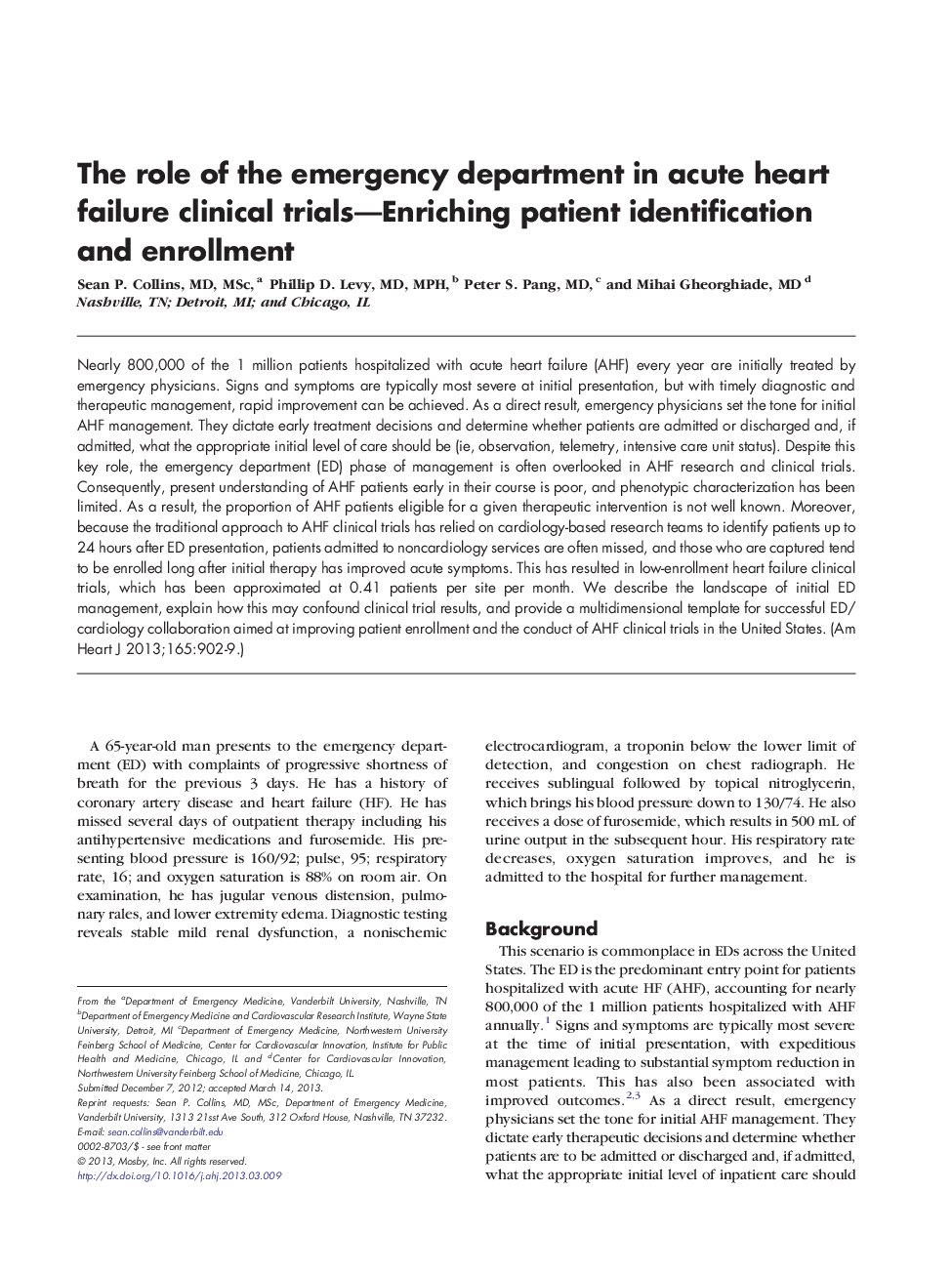| Article ID | Journal | Published Year | Pages | File Type |
|---|---|---|---|---|
| 2849397 | American Heart Journal | 2013 | 8 Pages |
Nearly 800,000 of the 1 million patients hospitalized with acute heart failure (AHF) every year are initially treated by emergency physicians. Signs and symptoms are typically most severe at initial presentation, but with timely diagnostic and therapeutic management, rapid improvement can be achieved. As a direct result, emergency physicians set the tone for initial AHF management. They dictate early treatment decisions and determine whether patients are admitted or discharged and, if admitted, what the appropriate initial level of care should be (ie, observation, telemetry, intensive care unit status). Despite this key role, the emergency department (ED) phase of management is often overlooked in AHF research and clinical trials. Consequently, present understanding of AHF patients early in their course is poor, and phenotypic characterization has been limited. As a result, the proportion of AHF patients eligible for a given therapeutic intervention is not well known. Moreover, because the traditional approach to AHF clinical trials has relied on cardiology-based research teams to identify patients up to 24 hours after ED presentation, patients admitted to noncardiology services are often missed, and those who are captured tend to be enrolled long after initial therapy has improved acute symptoms. This has resulted in low-enrollment heart failure clinical trials, which has been approximated at 0.41 patients per site per month. We describe the landscape of initial ED management, explain how this may confound clinical trial results, and provide a multidimensional template for successful ED/cardiology collaboration aimed at improving patient enrollment and the conduct of AHF clinical trials in the United States.
